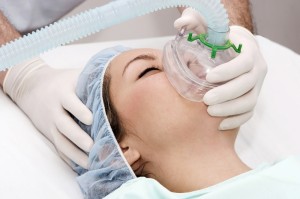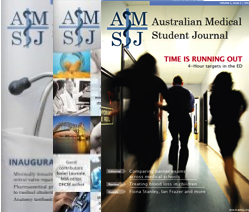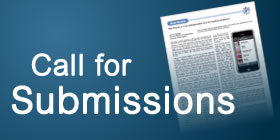Fourth Year Medicine (Undergraduate)
Monash University
Sugammadex is the first of a class of selective relaxant binding agents. It acts by binding with high affinity to steroidal non-depolarising neuromuscular blockade drugs terminating neuromuscular blockade (NMB) through 1:1 encapsulation. Reversal of NMB has traditionally been performed by acetylcholinesterase inhibitors however these drugs have their drawbacks and are therefore not ideal. This review examines the indications and advantages of sugammadex as well as the potential risks and shortcomings associated with its use. Sugammadex is a relatively new drug that has been shown to be efficacious with an improved side effect profile as compared to its alternatives however several factors associated with its use have yet to be determined. These shortcomings have relevance on a therapeutic level as well as on a health economics level.
Introduction
 NMB has been an important development in anaesthetic practice improving operative scenarios through patient paralysis. Muscle relaxation facilitates endotracheal intubation, ensures patient immobility and improves conditions for laparoscopic abdominal surgery. [1] Broadly speaking, the two classes of agents used are the depolarising NMB agents, of which there is only one in use, and the non-depolarising NMB agents. One of the significant problems with the non-depolarising NMB agents is their propensity to cause post operative residual blockade. This side effect of the drug has both patient safety implications and economic implications. The perfect solution to post operative residual blockade is absolute reversal of a non-depolarising NMB agent. This is routinely performed by cholinesterase inhibitors. These drugs however are less than perfect, as will be discussed and come with their own side effects. [11] A relatively new drug that has appeared on the marked is sugammadex, a selective reversal agent that is considered far superior. Given the recent arrival of sugammadex to the market, its use is yet to be perfected and its risks are yet to be fully understood. Furthermore it is a very costly drug raising questions regarding cost effectiveness. This review article will look at the extent to which sugammadex is the solution to the problems associated with muscle relaxant in anaesthesia.
NMB has been an important development in anaesthetic practice improving operative scenarios through patient paralysis. Muscle relaxation facilitates endotracheal intubation, ensures patient immobility and improves conditions for laparoscopic abdominal surgery. [1] Broadly speaking, the two classes of agents used are the depolarising NMB agents, of which there is only one in use, and the non-depolarising NMB agents. One of the significant problems with the non-depolarising NMB agents is their propensity to cause post operative residual blockade. This side effect of the drug has both patient safety implications and economic implications. The perfect solution to post operative residual blockade is absolute reversal of a non-depolarising NMB agent. This is routinely performed by cholinesterase inhibitors. These drugs however are less than perfect, as will be discussed and come with their own side effects. [11] A relatively new drug that has appeared on the marked is sugammadex, a selective reversal agent that is considered far superior. Given the recent arrival of sugammadex to the market, its use is yet to be perfected and its risks are yet to be fully understood. Furthermore it is a very costly drug raising questions regarding cost effectiveness. This review article will look at the extent to which sugammadex is the solution to the problems associated with muscle relaxant in anaesthesia.
Method
The study was performed through review of existing literature on sugammadex and its use. Searches were performed using Ovid MEDLINE and the Cochrane Database of Systematic Reviews using the following terms: sugammadex, rocuronium, pancuronium, neostigmine, vecuronium, neuromuscular block, neuromuscular blockade, post operative residual block, post operative residual curarisation, post operative residual paralysis and economic assessment. Titles and abstracts were read and assessed for relevance to the paper. Bibliographies of the identified articles were hand searched to find additional relevant studies. Searches were limited to: humans and the years 2000 to current.
Results
The Ovid MEDLINE search identified 1832 articles. Of these, 15 articles were identified as pertinent to this review. The Cochrane Database of Systematic Reviews identified one systematic review. A remaining six articles were identified from bibliographies. Therefore, a total of 21 articles were included in the final analysis.
Discussion
Neuromuscular Blockade
Neuromuscular blocking agents are used on certain patients undergoing anaesthesia in addition to an anaesthetic agent and an analgesic agent. The drugs have significant risks. They pose the hazard of post-operative residual blockade which will be discussed. They are also the most common cause of anaphylaxis during anaesthesia accounting for between 60% and 70% of cases. The most commonly offending agents are rocuronium and suxamethonium. [5]
Neuromuscular blocking agents aim to totally paralyse the surgical patient by creating a blockade at the neuromuscular junction. This is not a therapeutic intervention but is rather used to facilitate endotracheal intubation, to eliminate spontaneous ventilation and to provide abdominal muscle relaxation for laparoscopic surgery. [4]
There are two classes of neuromuscular blocking drugs; depolarising agents and non-depolarising agents. Depolarising agents work by binding to nicotinic receptors causing depolarisation. They are not metabolised by acetylcholinesterase unlike acetylcholine thus prolonged activation of the receptor is produced causing paralysis. The only clinically approved depolarising agent is suxamethonium, a very short acting non-reversible drug. [22]
The other class is the non-depolarising agents. These are competitive antagonists that bind to post-synaptic nicotinic receptors preventing access and depolarisation by acetylcholine. [22] There are numerous agents under this class, notably pancuronium, rocuronium, vecuronium and mivacurium. These drugs are categorised by their length of action; pancuronium is long acting, rocuronium and vecuronium are intermediate acting and mivacurium is short acting. They are used in different scenarios depending upon procedural requirements.
Rocuronium
Rocuronium is a commonly given non-depolarising neuromuscular blocking agent and is the primary target agent of sugammadex. It has a quick onset of action of 1-2 minutes and if given in high doses can mimic the rapid onset of suxamethonium. This is useful when considering rapid sequence induction for Caesarean section. If given in such high doses however its duration of action is lengthened behaving in a manner similar to pancuronium increasing the risk of postoperative residual blockade. It has a good side effect profile and has a 30 to 50% quicker recovery rate than pancuronium. [2,4] The problem with non-depolarising NMBDs is the risk of postoperative residual curarisation or residual NMB and the significant but small risk of anaphylaxis.
Post-operative residual neuromuscular blockade
Post-operative residual NMB presents a very real risk to surgical patients. It is a potentially reversible condition and should be avoided where possible. It has the potential to impair the integrity of an airway and can contribute to patient death. [6] Classic signs include airway obstruction, inadequate ventilation and hypoxia. Evidence suggests the incidence of adverse respiratory events is from 1.3 to 6.9% with one study suggesting the figure as high as 88% during the post anaesthetic care period. [7,8] The reason for such great variability in figures is in part due to the different definitions and methods of detection. In addition to patient risk, there is also evidence to suggest residual NMB has economic consequences contributing to operating theatre congestion and a bottleneck in patient flow. [9]
Postoperative residual blockade can be minimised through two strategies: 1) pharmacological reversal of NMBD effects and 2) optimisation of NMBD dosing through careful monitoring and titration of the relaxant. [11]
Neuromuscular Blockade Monitoring
Neuromuscular monitoring is routinely practiced, most commonly with train of four (TOF) ratios1. Classically a TOF of <0.7 was the criteria for residual NMB. This, however, has been discredited by Murphy et al. (2009) with evidence suggesting a TOF <0.9 is required to ensure a recovery. [7] Despite increasing stringency of neuromuscular monitoring the methods are not sufficiently objective or accurate. Naguib et al. [10] found in their meta-analysis the difference in residual NMB between TOF monitored and non-monitored patients with intermediate acting NMB agents was not statistically significant (P=0.314); however, incidence was increased with long acting NMB agents as compared with intermediate NMB agents. [10] Further methods of NMB monitoring include tidal volume, vital capacity, sustained tetanus, head lift and hand grips however all are considered inferior to TOF. [2]
Neuromuscular Blockade Reversal Agents
The other strategy for the prevention of residual paralysis is the use of pharmacological measures. Kovac et al. (2009) postulated that
“An ideal NMB reversal agent would; (1) have rapid onset; (2) be 100% effective and predictable; (3) reverse any degree of NMB; (4) be effective in the presence of potent anaesthetics; and (5) have minimal or no side effects.” [1]
Neostigmine
The common class of drug for NMB reversal agents are cholinesterase inhibitors, the most commonly used being neostigmine. [1,2] Cholinesterase inhibitors prevent the breakdown of acetylcholine in the neuromuscular junction, increasing neuromuscular transmission. [12] Neostigmine does not have a rapid onset, with the mean time to muscle recovery being 50.4 minutes. [16] The drug cannot reverse deep NMB with TOF<0.1. [13] The drug also has a ceiling dose and can only reverse drugs of certain potencies and of certain doses. [2] Duration of action is limited and consequently residual paralysis may still be evident or paralysis may reappear post administration. [3] The drug also has significant parasympathetic side effects due to excessive stimulation of muscarinic receptors. Side effects include bradycardia, arrhythmias, nausea, vomiting, increased GIT motility, bronchospasm and excessive secretions. To prevent these side effects, anticholinergic drugs are co-administered, notably glycopyrrolate or atropine, which have their own side effects, notably tachycardia, altered cardiac conduction, dysrhythmias and urinary retention. [1,12] In addition to the side effects, anticholinesterase drugs have further limitations including their lack of predictability and unreliability. [13]
As discussed, there are significant issues with residual NMB that are clinically underappreciated. The standard reversal agents that are routinely used are not without their drawbacks; their onset is slow, their side effect profile is significant and their efficacy is insufficient in particularly deep NMB. Furthermore, monitoring methods for residual blockade are inaccurate and technically difficult.
Sugammadex
Due to the limitations of the current class of NMB agents, sugammadex has become of interest. It is a modified cyclodextrin that has a high affinity with steroidal NMB agents (rocuronium>vecuronium>>pancuronium). [1,12] Cyclodextrins are oligosaccharides arranged in a circular shape surrounding a central cavity that can be used to bind molecules within the cavity, eliminating the target’s pharmacological action. In the case of sugammadex, cyclodextrins are modified to have a rocuronium inclusion complex. It will bind to all non-depolarising NMB agents, although with a decreased affinity. [23]
One of the major benefits of sugammadex is that unlike the anticholinesterase inhibitors, it does not interfere with the receptor systems but rather acts on the NMB agent itself, meaning there are little to no muscarinic side effects. The drug binds to the respective NMB agent rendering it unavailable at the neuromuscular junction. [12] A high dose can be given if required without a high risk of cardiovascular effects, as with neostigmine. Furthermore it does not need to be given with a muscarinic agonist, unlike anticholinesterase agents, eliminating the potential for further adverse events.
The drug is currently approved for use in Australia and the European Union; however, it is yet to be approved by the FDA in the United States. In August 2008, a not-approvable letter was issued not due to lack of efficacy but rather due to the risk of hypersensitivity and allergic reactions that had not been adequately determined. Further studies are currently being performed by Schering-Plough. [1]
The efficacy of sugammadex is well established by several significant studies. It has been shown to be a very effective NMBD reversal agent of non-depolarising NMB. Puhringer et al. (2010) reported an improvement in NMB reversal from rocuronium and vecuronium as compared with placebo, however these results represented trends and were not statistically significant. Mean rocuronium reversal times were 96.3 min with placebo and 1.5 min with sugammadex. Mean vecuronium reversal times were 79min and 3 min respectively. [20] One study by Lee et al. (2009) found that reversal of profound high dose rocuronium induced NMB with sugammadex reversal, and was substantially quicker than the use of the short acting suxamethonium. [18] Jones et al. (2008) found in a randomised comparison that sugammadex reverses profound rocuronium induced NMB significantly faster than that of neostigmine. [16] Alvarez-Gomez et al. (2007) made a similar finding in their study comparing the two drugs. [19] Sugammadex is also thought to halt relaxant induced anaphylaxis as it encircles the relaxant drugs theoretically preventing further immune reactions. However, this has not be sufficiently studied to confirm. [5] The drug has also been used successfully to reverse rocuronium induced NMB in a ‘can’t intubate can’t ventilate’ scenario. [21]
That being said there are adverse events as have been reported in 30 studies looking at 2000 patients. The most frequently reported side effects with an incidence greater than 2%, were hypotension, bronchospasm, QTc prolongation greater than 400msec, constipation, hyperactivity and altered taste sensation. Less common side effects included cough, dry mouth, temperature changes, parasthesia, parasomia, mild erythemia, abdominal discomfort, increased creatinine phosphokinase, bradycardia and dizziness. These adverse events did not appear to have a dose-response relationship. [1] While generally well tolerated, the adverse events one ought to be aware of are procedural pain, nausea and vomiting. [3]
Sugammadex can serve a purpose in rapid sequence induction. Traditionally, suxamethonium was used due to its quick speed of onset and short duration of action. However, this drug comes with a substantial list of side effects. [4] Instead, rocuronium can be given in high doses to quicken onset and can be quickly reversed at the close of the operation with sugammadex, although this is still considered second line.
The risks of residual NMB, as discussed previously, can be eliminated with the use of sugammadex. There are still some concerns for its regular use. Many studies have been conducted on the drug, looking at factors such as side effects and suitable dose ranges; however, more studies need to be conducted with larger cohorts to fully appreciate the risks. Patients with poorer health and who are more predisposed to adverse events have yet to be studied in great detail. [3]
While the cost of sugammadex is of no therapeutic relevance it needs to be taken into account from a health economics point of view. The cost is significant with a 200mg/2mL vial costing AUD188.90 and a 500mg/5mL vial costing AUD477.80 (cost sourced from FRED Dispense®, accessed 9th August 2013). It is not covered by the PBS and must be bought privately. Two systematic reviews have been performed in the UK on the cost benefit of sugammadex, both published in the British Journal of Anaesthesia. Both studies acknowledge that there could be cost benefit both from mortality and morbidity reduction point of views and with regards to optimisation of theatre time and post-anaesthetic care. However, the studies conclude that it would not be feasible to make an accurate economic assessment due to a lack of evidence. [14,15] It should be noted that these studies are UK relevant and apply differently to Australian practice. Zhang et al. (2008) found in their preliminary study of cost benefit that there is an appreciable decrease in postoperative time spent in an operating theatre improving cost efficiency; however, this failed to take into account the drug cost itself. Furthermore the study is applicable to the US health system and again may lack relevance to the Australian health system. [17]
The impetus for this paper came from an episode that occurred in theatre. A middle aged female due to receive a cholecystectomy was in an extremely anxious state before entering the operating theatre. She was convinced to go ahead with the procedure, which was uneventful. She was paralysed with rocuronium which was reversed with sugammadex. Upon reversal, the patient had a sudden severe reflexive episode going into a tonic-clonic contracture causing her jaw to occlude the endotracheal tube, in turn causing her oxygen saturation levels to fall. She had to be re-paralysed with suxamethonium to allow for manual respiration with bag and mask.
An episode as described above is not an uncommon event and can occur during the emergence from anaesthesia; however the episodes are rarely so severe. It is very possible the sugammadex can be partly blamed for the reflexive episode, with a sudden return of muscle tone increasing afferent input through the muscle and tendon stretch receptors causing the biting. Because the standard reversal agents are not as effective as sugammadex, similar reflexive episodes that have taken place will have not had the severity seen here. The drug is still very new and anaesthetists are perhaps yet to fully understand its use. With experience such events will become increasingly rare through improved use.
It has been shown convincingly that sugammadex is a superior NMB reversal agent to the cholinesterase inhibitors in terms of efficacy, although it has a significant side effect profile. Despite the considerable research that has been performed on the benefits and risks of the drug’s use, there are still many gaps in the literature which require further research.
There was no case report or evidence of similar cases to that in the clinical scenario discussed earlier. A case report of this incident may be of value. The patient’s response may have been due to incorrect dosing or indeed a rare reaction that is yet to be clinically identified.
Conclusion
This paper examined the use of sugammadex and its role in anaesthetic, focussing both on the risks and benefits of use. Having studied the available literature, there is a clear therapeutic benefit in the reduction of postoperative residual NMB, a preventable event that poses significant risk to patients. It presents a superior alternative to the current first line anticholinesterase NMB reversal agents. The benefit of the drug from a health economics point of view is yet to be determined, having regard to its high cost. Furthermore, the potential adverse effects and hypersensitivity reactions have not been adequately studied. The true side effect profile may require a very long period of testing or long term routine use before there is a good understanding. Sugammadex does have a role in very specific anaesthetic scenarios, however, given its significant cost and gaps in the literature, it cannot be recommended suitable for routine use.
Conflict of interest
None declared.
Correspondence
H Badgery: hebad2@student.monash.edu
References
[1] Kovac AL. Sugammadex: the first selective binding reversal agent for neuromuscular block. Journ Clin Anes.; 2009;21(6):444 – 453.
[2] Miller RD, Pardo M 2011 Basics of Anaesthesia. Sixth edition, pp 224-226
[3] Yang LPH, Keam SJ. Sugammadex: A review of its use in Anaesthetic Practice. Drugs; 2009;69(7):919 – 942.
[4] Rang HP, Dale MM, Ritter JM, Moore PK. 2003 Pharmacology, Fifth Edition. pp 149-154.
[5] McDonnell NJ, Pavy TGP, Green LK, Platt PR. Sugammadex in the management of rocuronium-induced anaphylaxis. Brit Journ Anaes; 2011;106(2):119-201.
[6] Eikermann M, Peters J, Herbstreit F. Impaired upper airway integrity by residual neuromuscular blockade: increased airway collapsibility and blunted genioglossus muscle activity in response to negative pharyngeal pressure. Anesthesiol; 2009;110(6):1253-1260.
[7] Murphy GS, Szokol JW, Marymont JH, Greenberg SB, Avram MJ, Vender JS. Residual neuromuscular blockade and critical respiratory events in the postanesthesia care unit. Anesth Analg; 2009;107(1):130-7.
[8] Mathias LAST, de Bernadis RCG. Postoperative Residual Paralysis. Rev Bras Anesthesiol; 2012;62(3):439-450.
[9] Butterly A, Bittner EA, George E, Sandberg WS, Eikermann M, Schmidt U. Postoperative Residual Curarization from intermediate-acting neuromuscular blocking agent delays recovery room discharge. Brit Journ Anaes; 2010;105(3):304-309.
[10] Naguib M, Kopman AF, Ensor JE. Neuromuscular monitoring and postoperative residual curarisation: a meta-analysis. Brit Journ Anaes; 2007;98(3):302-316.
[11] Maybauer DM, Geldner G, Blobner M, Pühringber, Hofmockel R, Rex C, Wulf HF, Eberhart L, Arndt C, Eikermann M. Incidence and duration of residual paralysis at the end of surgery after multiple administrations of cisatracurium and rocuronium. Anaes; 2007;62(1):12-17.
[12] Abrishami A, Ho J, [12] Abrishami A, Ho J, Wong J, Yin L, Chung F. Sugammadex, a selective reversal medication for preventing postoperative residual neuromuscular blockade. Cochrane Database Syst Rev [Internet] 2009 [cited 15 Sept 2012]. Available from http://onlinelibrary.wiley.com.ezproxy.lib.monash.edu.au/doi/10.1002/14651858.CD007362.pub2/pdf
[13] Magorian T, Lynam DP, Caldwell JE, Miller RD: Can early administration of neostigmine in single or repeated doses alter the course of neuromuscular recovery from a vecuronium-induced neuromuscular blockade? Anesthesiol; 1990; 73(3):410-414.
[14] Chambers D, Paulden M, Paton F, Heirs M, Duffy S, Hunter JM, Sculpher M, Woolacott N. Sugammadex for reversal of neuromuscular block after rapid sequence intubation: a systematic review and economic assessment. Brit Journ Anaes; 2010;105(5):568-575.
[15] Paton F, Paulden M, Chambers D, Heirs M, Duffy S, Hunter JM, Sculpher M, Woolacott N. Sugammadex compared with neostigmine/glycopyrrolate for routine reversal of neuromuscular bloc: a systematic review and economic evaluation. Brit Journ Anaes; 2010;105(5):558-567.
[16] Jones RK, Caldwell JE, Brull SJ, Soto RG. Reversal of profound rocuronium-induced blockade with Sugammadex. A randomized comparison with neostigmine. Anesthesiol; 2008;109(5):816-824.
[17] Zhang B, Menzin J, Tran MH, Neumann PJ, Friedman M, Sussman M, Hepner D. The potential savings in operating room time associated with the use of sugammadex to reverse selected neuromuscular blocking agents: findings from a hospital efficiency model. Val Health; 2008;11(3):244.
[18] Lee C, Jahr JS, Candiotti KA, Warriner B, Zornow MH, Naguib M. Reversal of Profound Neuromuscular Block by Sugammadex Administered Three Minutes After Rocuronium: A Comparison with Spontaneous Recovery from Succinylcholine. Anesthesiol; 2009;110(5):1020-1050.
[19] Alvarez-Gomez JA, Wattiwill M, Vanacker B, Lora-Tamayo JI, Khunl-Brady KS. Reversal of vecuronium-induced shallow neuromuscular blockade is significantly faster with Sugammadex compared with neostigmine. Euro Journ Anaes; 2007;24(suppl.39):124-125.
[20] Puhringer FK, Gordon M, Demeyer I, Sparr HJ, Ingimarsson J, Klarin B, van Duijnhoven W, Heeringa M. Sugammadex rapidly reverses moderate rocuronium- or vecuronium- induced neuromuscular block during sevoflurane anaesthesia a dose-response relationship. Brit Jour Anaes; 2010;105(5):610-619.
[21] Curtis R, Lomax S, Patel B. Use of Sugammadex in a ‘can’t intubate, can’t ventilate’ situation. Brit Journ Anaes; 2012;108(4):612-614.
[22] Appiah-Ankam J, Hunter JM. Pharmacology of neuromuscular blocking drugs Contin Educ Anaesth Crit Care Pain; 2004;4(1):2-7.
[23] Baldo BA, McDonnell NJ, Pham NH. Drug-specific cyclodextrins with emphasis on sugammadex, the neuromuscular blocker rocuronium and perioperative anaphylaxis: implications for drug allergy. Clin Exp Allergy; 2011;41(12):1663-1678.
 Download PDF
Download PDF Read online
Read online You can subscribe by e-mail to receive each issue when it's published.
You can subscribe by e-mail to receive each issue when it's published.
 Download the issue
Download the issue Print this extract
Print this extract Share on Facebook
Share on Facebook


